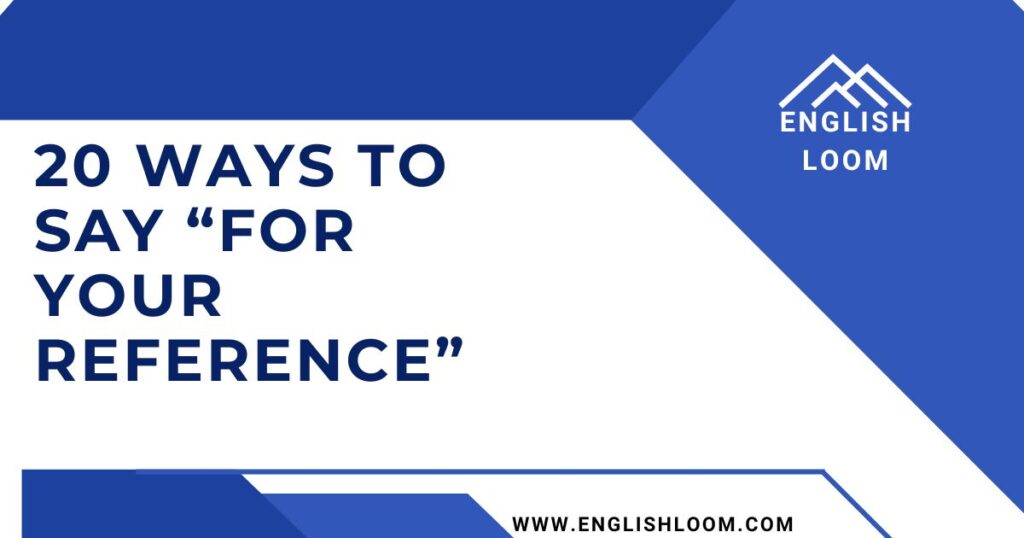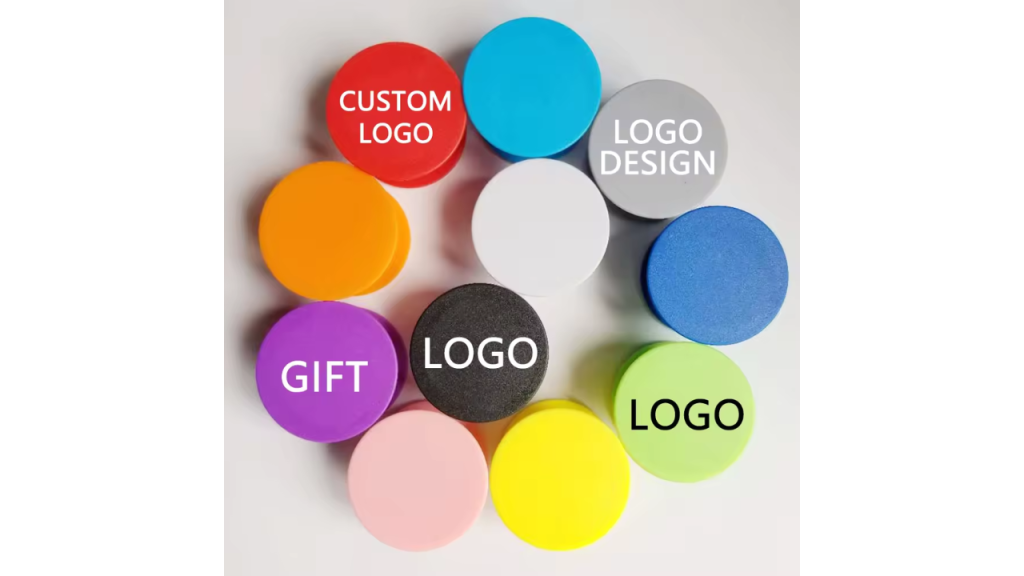
In the realm of professional communication, clarity and precision are most important. One phrase commonly used to provide additional information or direct someone to a specific source is “For Your Reference.” However, the English language is rich and diverse, offering numerous alternatives to convey the same message with a touch of sophistication. This article explores 20 distinct ways to say “For Your Reference,” accompanied by scenario examples to illustrate their appropriate use.
Alternative Ways Of Saying “For Your Reference”
- Perusal Purposes
- Consult the Following
- Reference the Attached
- Review at Your Convenience
- Examine the Enclosed
- Investigate the Following
- Delve Into the Details
- Explore the Document
- Absorb the Information
- Scrutinize the Details
- Refer to the Following
- Analyze the Enclosed Information
- Inspect the Attached
- Consider the Following
- Perceive the Information Below
- Navigate the Document
- Survey the Contents
- Examine the Provided Information
- Investigate the Attached Materials
- Explore the Enclosed Resources
1. Perusal Purposes
When you want to inform a colleague that a document or information is attached for their review, you can opt for “Perusal Purposes.” This expression is suitable when you want to convey a sense of importance and ensure that the recipient takes the time to absorb the content. For instance:
Dear Alex,
Please find the updated project timeline attached for your perusal purposes. Let me know if you have any questions.
Best regards,
Emily
2. Consult the Following
In situations where you want someone to consult specific details, the phrase “Consult the Following” can be a refined choice. Consider the following example in an email:
Hi Jack,
I have compiled a detailed report on market trends. Kindly consult the following document for a comprehensive analysis.
Regards,
Victoria
3. Reference the Attached
When sending an email with attachments and you want the recipient to take note, use “Reference the Attached.” This phrase is particularly useful when you want to draw attention to specific documents or files that accompany your message. Here’s an example:
Dear Chris,
For a detailed breakdown of the budget, reference the attached spreadsheet. Let me know if you need further clarification.
Best,
Olivia
4. Review at Your Convenience
The expression “Review at Your Convenience” is a polite way of suggesting that the recipient takes the time to examine the provided information whenever it suits them. It acknowledges the recipient’s busy schedule while emphasizing the importance of a thorough review.If you wish to convey that the information is available for review at the recipient’s convenience, use this phrase
Example:
Hey Mark,
The proposal for the upcoming client meeting is ready. Please review at your convenience and share your feedback.
Thanks,
Natalie
5. Examine the Enclosed
When enclosing documents or materials and requesting examination, “Examine the Enclosed” can be an alternative. For instance:
Dear Mr. Johnson,
Enclosed is the contract draft for the upcoming project. Kindly examine the enclosed and let us know your thoughts.
Sincerely,
David
6. Investigate the Following
For a more proactive tone, consider using “Investigate the Following” to suggest a thorough exploration of the provided information.
Example:
Hello Sarah,
To better understand our recent market research, I recommend you investigate the following report. Feel free to reach out with any questions.
Best regards,
Michael
7. Delve Into the Details
When you want someone to explore the finer points of a subject, “Delve Into the Details” is a suitable replacement. Here’s an example:
Dear Lisa,
To gain insights into the project specifications, please delve into the details outlined in the attached document.
Best,
Jason
8. Explore the Document
For a straightforward yet effective expression, use “Explore the Document” to suggest a comprehensive examination.
Example:
Hi James,
Attached is the user manual. Take a moment to explore the document for a better understanding of the new software.
Regards,
Emma
9. Absorb the Information
When you want someone to absorb the information at their own pace, consider using “Absorb the Information.”
Example:
Dear Mr. Anderson,
Attached are the research findings. Please take some time to absorb the information before our meeting next week.
Sincerely,
Grace
10. Scrutinize the Details
For a more focused request for examination, “Scrutinize the Details” can convey a sense of thorough inspection.
For example:
Hello Emily,
The contract amendments are highlighted in the attached file. Kindly scrutinize the details and provide your feedback.
Best,
John
11. Refer to the Following
When directing someone to a particular section or document, the phrase “Refer to the Following” can be aptly used. Example:
Dear Mr. Smith,
For a breakdown of the budget allocation, please refer to the following section in the attached financial report.
Sincerely,
Alice
12. Analyze the Enclosed Information
To encourage a detailed analysis of provided information, use “Analyze the Enclosed Information.” Example:
Hi Rachel,
Attached is the market analysis report. Take some time to thoroughly analyze the enclosed information before our strategy meeting.
Best regards,
Daniel
13. Inspect the Attached
When sending an attachment and emphasizing the need for careful inspection, “Inspect the Attached” can be a suitable alternative. Example:
Dear Ms. Turner,
To understand the project scope, please inspect the attached project proposal. Let me know if you have any questions.
Regards,
Edward
14. Consider the Following
When presenting options or suggestions, using “Consider the Following” can guide the recipient’s attention. For example:
Hello Alex,
To enhance our marketing strategy, I suggest you consider the following market trends outlined in the attached report.
Best,
Sophie
15. Perceive the Information Below
For a more formal expression, “Perceive the Information Below” can be used to draw attention to specific details. Example:
Dear Mr. Davis,
In preparation for our upcoming meeting, kindly perceive the information below regarding the project milestones.
Kind regards,
Emma
16. Navigate the Document
When the recipient needs to navigate through a document or file, suggesting to “Navigate the Document” can be clear and concise. For instance:
Hi Sarah,
Attached is the user guide. Please take a moment to navigate the document for step-by-step instructions.
Regards,
Tom
17. Survey the Contents
To suggest a thorough examination of the contents, the phrase “Survey the Contents” can be a suitable choice. Example:
Dear Ms. Parker,
Attached are the marketing materials. Please take a moment to survey the contents and share your thoughts.
Best regards,
John
18. Examine the Provided Information
When clarity is crucial, “Examine the Provided Information” communicates a straightforward request for review. For example:
Hi Jessica,
The attached document outlines the project specifications. Kindly examine the provided information and let me know if any adjustments are needed.
Regards,
David
19. Investigate the Attached Materials
For a more investigative tone, “Investigate the Attached Materials” can prompt a thorough exploration of provided resources. Example:
Hello Mr. Roberts,
To understand the product features, please investigate the attached materials including the user manual and specifications.
Sincerely,
Laura
20. Explore the Enclosed Resources
To emphasize the wealth of information contained in attachments, “Explore the Enclosed Resources” serves as a comprehensive call to action. For example:
Dear Ms. Mitchell,
For a comprehensive overview of our recent market research, I encourage you to explore the enclosed resources. Feel free to reach out if you have any questions.
Best regards,
Michael
Conclusion
In professional communication, the ability to convey messages effectively is crucial. Utilizing a variety of phrases instead of the typical “For Your Reference” not only adds a touch of sophistication but also enhances clarity. Each alternative phrase has its unique touch, making it suitable for specific contexts and scenarios.
Remember, the key to successful communication is not only what you say but also how you say it. By incorporating these alternatives into your professional correspondence, you can elevate the impact of your messages and create a positive impression.
A well-designed menu is essential for attracting and satisfying customers, as it sets the tone for the dining experience and showcases the establishment’s culinary offerings. From appetizers and entrees to desserts and beverages, menus are carefully curated to cater to various tastes and dietary preferences.
They can be presented in different formats, such as printed copies, digital displays, or online platforms, to suit the needs of modern consumers. By providing a comprehensive and enticing menu, restaurants can effectively communicate their brand identity and entice customers to dine with them.
Synonyms
12 Ways To Say “Thank You for Sharing”
18 Ways To Say “If Time Permits”



